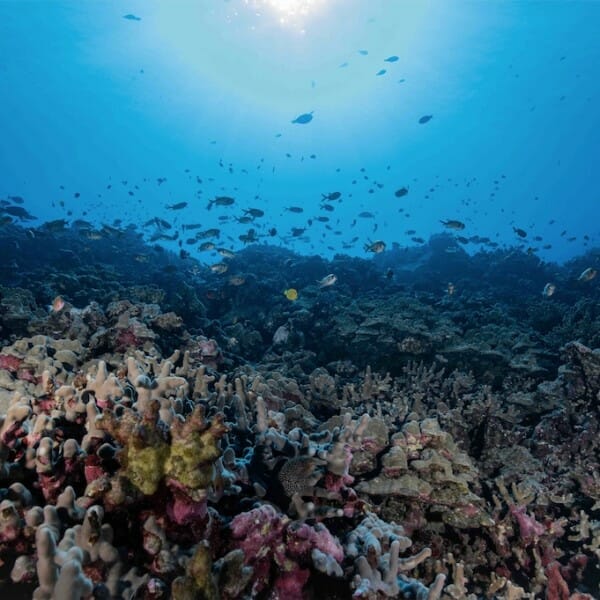Resource fishes — species targeted for human consumption — play a key role in reef ecosystems long before they end up on the dinner table. In Hawaii, subsistence and recreational fishing of local resource fish represent more than half of the share of annual reef seafood consumption, while also playing a vital role in indigenous cultural life.
These same fishes also help reefs to stay healthy by removing algae from coral surfaces, which in turn, helps coral recover from bleaching. Given the beneficial relationship between resource fishes and corals, determining how local pressures impact resource fish biomass is necessary for improving reef conservation and management.
In a new study investigating human impacts on resource fish biomass on the island of Hawaii, researchers from the Arizona State University Center for Global Discovery and Conservation Science and Hawaii Division of Aquatic Resources observed an alarming 45% decrease in fish biomass over a decade of surveys. The scientists proposed actionable solutions to mitigate future losses. The study was published Aug. 5 in Ecological Applications.
The abstract follows.
Human activities and land‐use drivers combine in complex ways to affect coral reef health, and in turn, the diversity and abundance of reef fauna. Here we examine the impacts of different marine protected area (MPA) types, and various human and habitat drivers, on resource fish functional groups (i.e. total fish, herbivore, grazer, scraper and browser biomass) along the 180 km west coast of Hawai‘i Island. Across survey years from 2008 to 2018, we observed an overall decrease in total fish biomass of 45 %, with similar decreases in biomass seen across most fish functional groups. MPAs that prohibited a combination of lay nets, aquarium collection, and spear fishing were most effective in maintaining and/or increasing fish biomass across all functional groups. We also found that pollution, fishing and habitat drivers all contributed to changes in total fish biomass, where the most negative impact was nitrogen input from land‐based sewage disposal. Fish biomass relationships with our study drivers depended on fish functional grouping. For surgeonfish (grazers), changes in biomass linked most strongly to changes in reef rugosity. For parrotfish (scrapers), biomass was better explained by changes in commercial catch where current commercial fishing levels are negatively affecting scraper populations. Our observations suggest that regional management of multiple factors, including habitat, pollution and fisheries, will benefit resource fish biomass off Hawai‘i Island.
